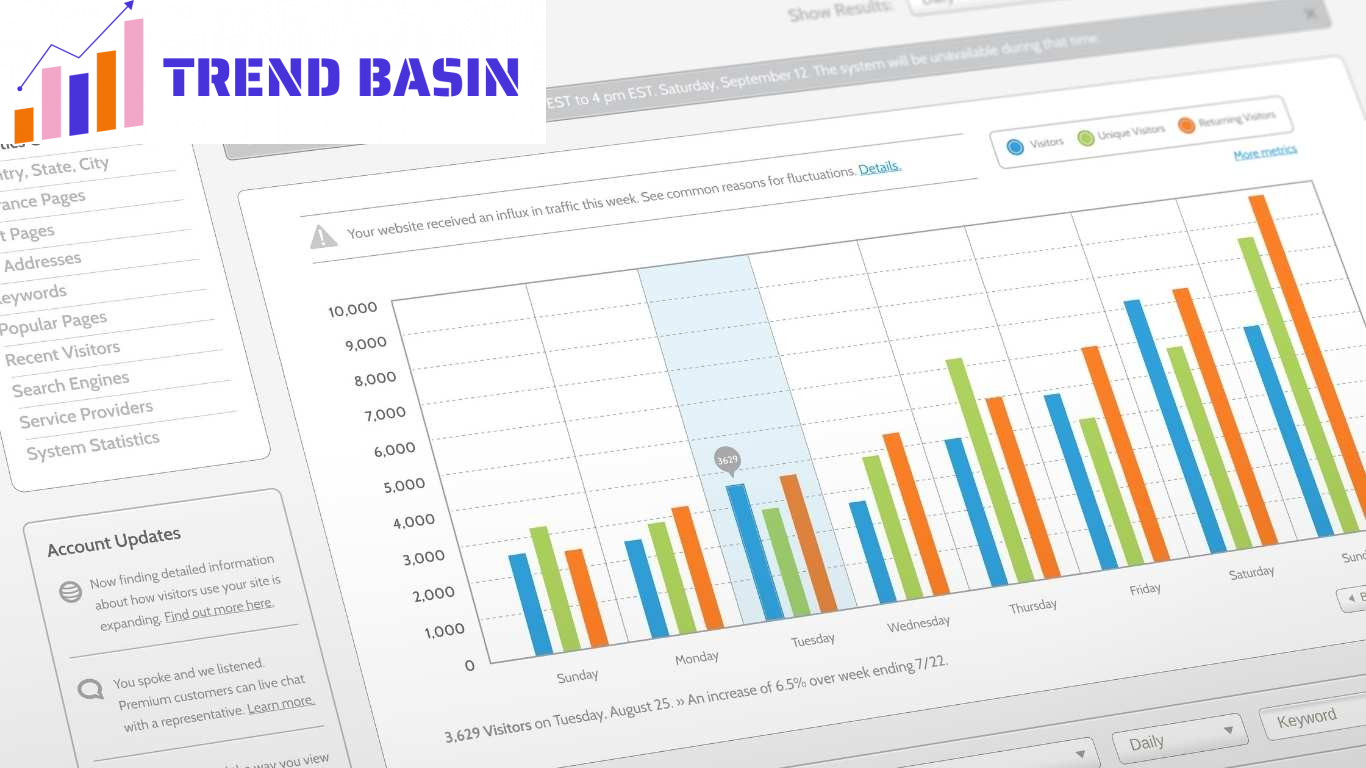Email Deliverability: Ensuring Your Emails Reach the Inbox
Ensuring your emails reach the inbox is crucial for successful email marketing campaigns.
High deliverability rates are essential for maximizing engagement and achieving your marketing goals.
In this article, Trend Basin explore effective strategies to enhance email deliverability, focusing on best practices and actionable tips that can help you improve your overall email marketing performance.
Key Takeaways
- Email deliverability is critical for successful email marketing.
- Maintain a clean email list and authenticate your domain.
- Monitor your sender reputation and engage with your audience effectively.
- Personalize your email content and segment your audience for better results.
What is Email Deliverability?
Email deliverability refers to the ability of an email message to reach the intended recipient’s inbox rather than ending up in spam or junk folders.
Factors influencing deliverability include sender reputation, email authentication, content quality, and recipient engagement.
A high deliverability rate ensures that your emails are seen and acted upon, leading to better campaign results and a higher return on investment.
Why is Email Deliverability Important?
- Maximizing Engagement: If your emails don’t reach the inbox, your audience won’t see your content. Higher deliverability leads to increased open and click-through rates, which are crucial for driving traffic and conversions.
- Building Reputation: Consistently landing in the inbox helps build your sender reputation with ISPs (Internet Service Providers), improving future deliverability. A good reputation reflects positively on your brand.
- Achieving Goals: Whether it’s driving traffic to your website or generating leads, successful email marketing relies on effective deliverability. High deliverability directly impacts your ability to achieve your marketing objectives.
Key Factors Influencing Email Deliverability
Sender Reputation
Your sender reputation is a score that ISPs assign to your sending domain based on various factors, including your sending history, engagement rates, and complaint rates.
A high sender reputation increases the likelihood of your emails landing in the inbox.
- Monitor Bounce Rates: High bounce rates can negatively impact your sender reputation. Regularly clean your email list to remove invalid addresses and ensure you only send to valid, engaged recipients.
- Track Complaints: Keep an eye on spam complaints. Encourage subscribers to whitelist your email address and provide easy ways for them to unsubscribe if they no longer wish to receive your emails.
Email Authentication
Authenticating your emails helps ISPs verify your identity as a sender, improving your deliverability. Email authentication establishes trust between your domain and the ISPs.
- SPF (Sender Policy Framework): SPF records specify which IP addresses are allowed to send emails on behalf of your domain. Setting up an SPF record helps prevent spoofing.
- DKIM (DomainKeys Identified Mail): DKIM adds a digital signature to your emails, confirming their authenticity. This signature helps ISPs determine that the email hasn’t been altered in transit.
- DMARC (Domain-based Message Authentication, Reporting & Conformance): DMARC combines SPF and DKIM, providing instructions on handling unauthenticated emails. It also allows you to receive reports on your email authentication status.
Engaging Content
Creating engaging content is essential for maintaining a healthy sender reputation. The more your audience interacts with your emails, the better your deliverability.
- Personalize Your Emails: Use recipient names and segment your audience for targeted messaging. Personalization can significantly improve engagement rates.
- Optimize for Mobile: Ensure your emails are mobile-friendly, as many users check emails on their phones. Responsive design improves user experience and reduces the chances of recipients marking your emails as spam.
Strategies for Improving Email Deliverability
1. Maintain a Clean Email List
Regularly cleaning your email list is one of the most effective ways to improve deliverability. An up-to-date list reduces bounce rates and increases engagement.
- Use Double Opt-In: Implement a double opt-in process to ensure only interested recipients join your list. This not only improves your list quality but also ensures that your subscribers genuinely want to hear from you.
- Conduct Regular Audits: Schedule periodic reviews of your email list to remove bounced and inactive accounts. Tools like NeverBounce or ZeroBounce can help verify your email list’s accuracy.
- Engagement Metrics: Regularly monitor engagement metrics to identify inactive subscribers. Create re-engagement campaigns for these users before removing them from your list.
2. Monitor Your Sender Reputation
Your sender reputation directly impacts your email deliverability. It’s crucial to actively monitor and manage it.
- Use Reputation Monitoring Tools: Utilize tools like Sender Score or Google Postmaster Tools to track your sender reputation. These tools provide insights into your email performance and areas for improvement.
- Track Metrics: Monitor open rates, click-through rates, and bounce rates to gauge your deliverability. High open rates indicate a positive reputation, while low rates may signal issues.
- Adjust Sending Practices: If your reputation is declining, consider adjusting your sending frequency, improving content quality, or revisiting your email authentication settings.
3. Segment Your Audience
Segmenting your audience allows for targeted messaging, which can improve engagement rates and enhance deliverability.
- Behavior-Based Segmentation: Group subscribers based on their engagement levels or preferences. For instance, send different content to active users versus those who haven’t engaged in a while.
- Demographic Segmentation: Create segments based on age, location, or interests to tailor your messaging. Personalized content resonates better with subscribers, leading to higher engagement.
- Dynamic Content: Use dynamic content to show different offers or messages to different segments within the same email. This enhances relevance and engagement.
4. Use a Reputable Email Service Provider (ESP)
Choosing the right ESP is essential for ensuring high deliverability rates.
- Research Options: Look for ESPs that offer features like list management, authentication, and analytics. Providers like Mailchimp, SendinBlue, and Constant Contact have robust deliverability features.
- Leverage Support: Utilize the support resources your ESP provides to optimize your email campaigns. Many ESPs offer best practice guides and customer support to help you improve deliverability.
5. Optimize Your Sending Practices
Implementing best practices for sending emails can significantly impact your deliverability.
- Establish a Consistent Sending Schedule: Consistency helps ISPs recognize your sending patterns. This familiarity can positively influence your sender reputation.
- Avoid Spammy Language: Be mindful of your language and subject lines. Avoid using words commonly associated with spam (like “free,” “act now,” or excessive exclamation marks).
- Test Your Emails: Use A/B testing to experiment with different subject lines, content, and sending times. Analyze results to identify what resonates best with your audience.
Testing and Monitoring
Regularly test your emails to ensure they reach the inbox.
- Use Testing Tools: Tools like Mail Tester or GlockApps can help you analyze your email’s deliverability score and provide suggestions for improvement.
- Monitor Performance: Track performance metrics after sending campaigns. Look for patterns in engagement to refine your approach over time.
Real-World Case Studies
Case Study 1: A/B Testing for Subject Lines
- Results: The second subject line, tailored for a segmented audience, resulted in a 30% higher open rate. This illustrates the power of personalization in enhancing email performance.
Case Study 2: Re-engagement Campaign Success
- Results: They sent a personalized email asking if the subscribers wanted to stay on the list. The campaign achieved a 25% re-engagement rate, allowing the company to maintain a healthy email list.
Conclusion



